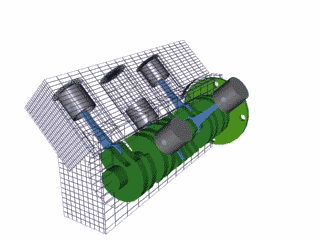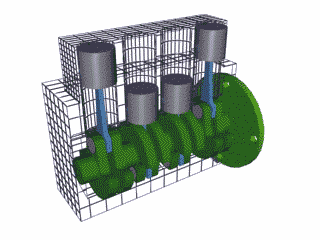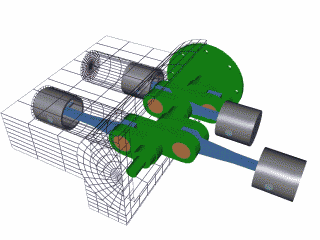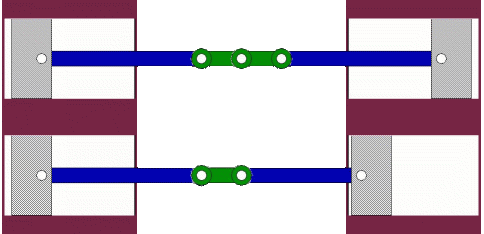

 |
 |
| Example of a cross-plane crank in action. | Cross-plane crank. Crank pins are 90° from each other. |
Flat-plane crank: The crank pins are on opposite sides of the crank centerline - 180º apart. All the pisons on one bank reach TDC or BDC at the same time.
Thus, the firing order on a flat-plane crank alternates between banks -- on a cross-plane crank it usually doesn't so you periodically get sequential exhaust pulses into the same exhaust side giving the "muscle car" rumble in a dual exhaust. More information is here and here.
 |
| Flap-plane crank. Crank pins are 180° from each other. |
 |
 |
Lastly, do not confuse flat-plane (crank) with flat (or boxer) engine! An engine can be flat but use an non-flat-plane crank. For example, a 12-cylinder engine can be flat but it will use a crank where the crank pins are spaced 60º.
 In this type of Ferrari engine the "180º V" is describing the cylinder orientation only; because each crank pin shares two pistons it would be more accurate to label the 180º V12 as a flat engine. Remember, a boxer engine has only one piston per crank pin.
In this type of Ferrari engine the "180º V" is describing the cylinder orientation only; because each crank pin shares two pistons it would be more accurate to label the 180º V12 as a flat engine. Remember, a boxer engine has only one piston per crank pin.| Figure 1. Boxer engine. Two crank pins. |  |
| Figure 2. 180º V engine. One crank pin. |
-- End Of Document --